Peter Paul Rubens in 10 Paintings
A Baroque master and portraitist of the royals, Peter Paul Rubens is probably best known for his often drama-filled religious and mythological...
Anna Ingram 30 May 2024
Frans Hals (c. 1582–1666) was one of the Dutch Golden Age painters. Born in Antwerp, he spent his entire adult life in Haarlem. Hals is most famous for his portraits, which also form the bulk of his oeuvre. His sitters, especially in later works, ooze solemn authority, but earlier in his career we can find works where the sitter is smiling or laughing, so why not laugh with them? Here are some reasons to keep smiling.
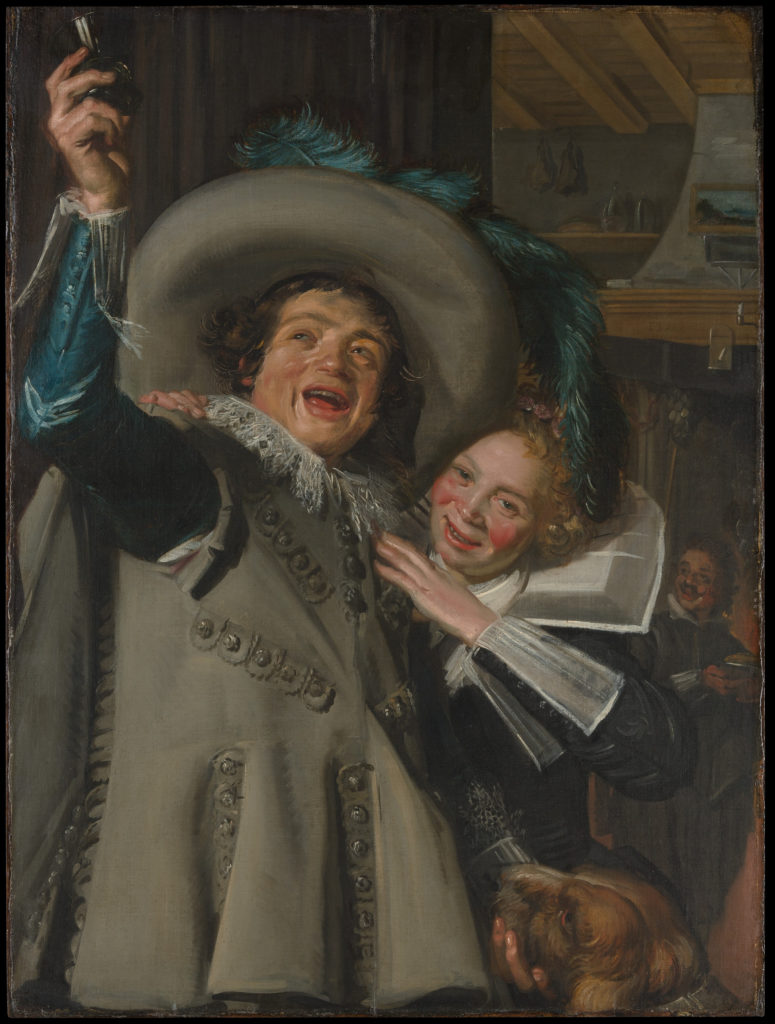
For a long time, it was believed that Frans Hals had a bit of a drinking problem, which in turn caused his financial problems. This idea was introduced by the inventive biographer Arnold Houbraken in 1718 and lasted beyond the nineteenth century. However, this notion is contradicted by documentary evidence. The fact that Hals painted people in various stages of intoxications does not mean by default that he had a drinking problem. What he did have is a gift for showing emotions in a way that resonates with the viewer. We can see the sheer joy of a good party on the man’s face. It makes us want to join the festivities, toast him and pet the dog.
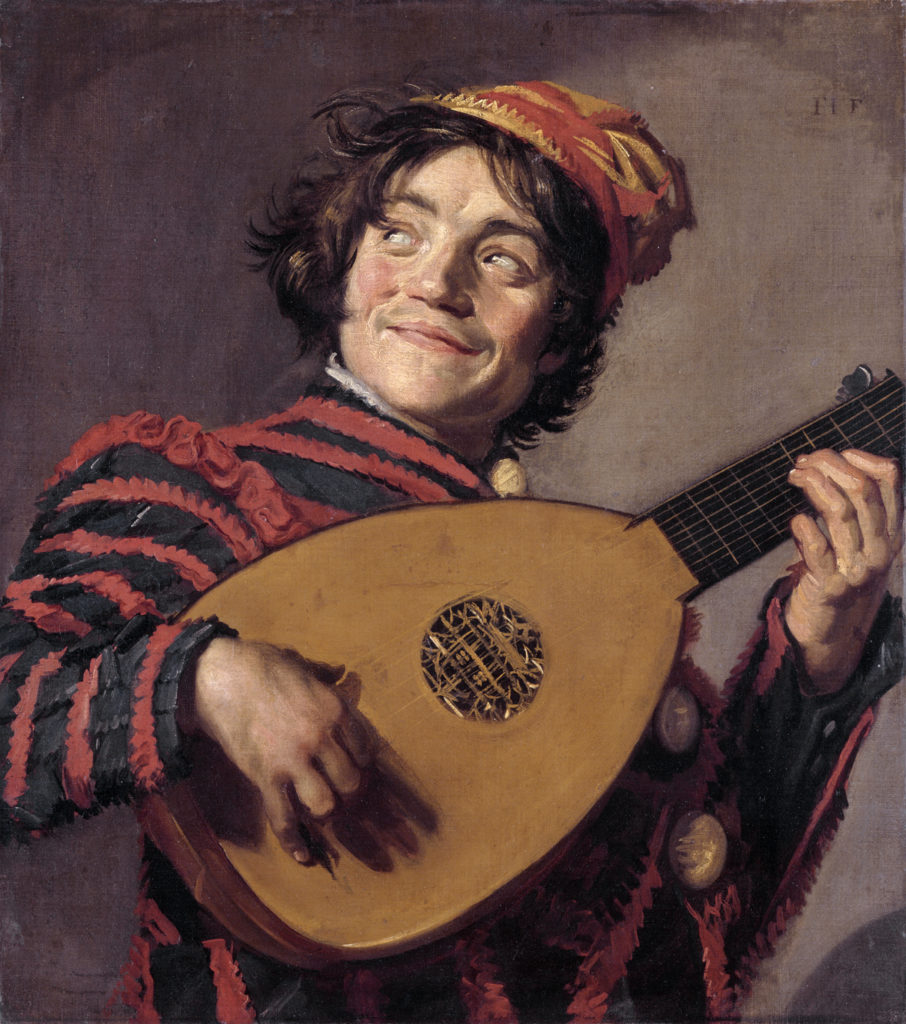
Look at this face. This happy self-satisfaction coming from doing something well and knowing it. Our lute player is probably showing off to someone, and he is pretty certain he will make an impression. If only I had the patience to learn to play an instrument… This painting, as well as several of the following ones, is a tronie. Tronies – studies of heads –are a separate category of portraiture because they depict anonymous models. These bust-length portrayals were intended as studies of facial expressions or characterizations of certain figure types. They do not depict a specific person, which made them possible to sell in an open market, rather than paint them only when commissioned.
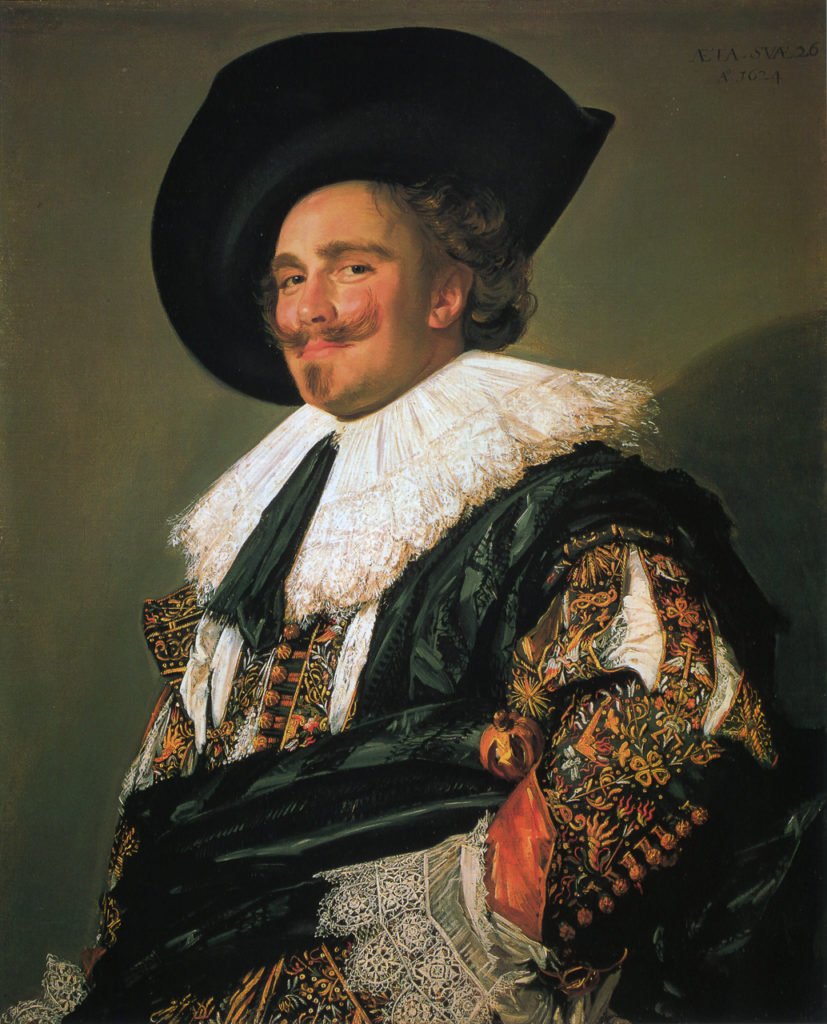
Of course, he is not laughing. He is merely smiling. And yet his eyes and the line of moustache give us the impression that he is on the verge of bursting into laughter. Why shouldn’t he be? Look at his clothes, so much beautiful lace, the thick rich textiles, and the sleeves with cut-outs; what’s not to like? He is young, he is rich, and he is about to laugh. He also had to visit Haarlem to get his portrait painted. Hals in his career made a point of not moving and uprooting his family to find work or follow his patrons, instead, he made them all come to Haarlem. Which worked well as a strategy whilst Haarlem was prosperous, but when the tide turned Hals also suffered financially.
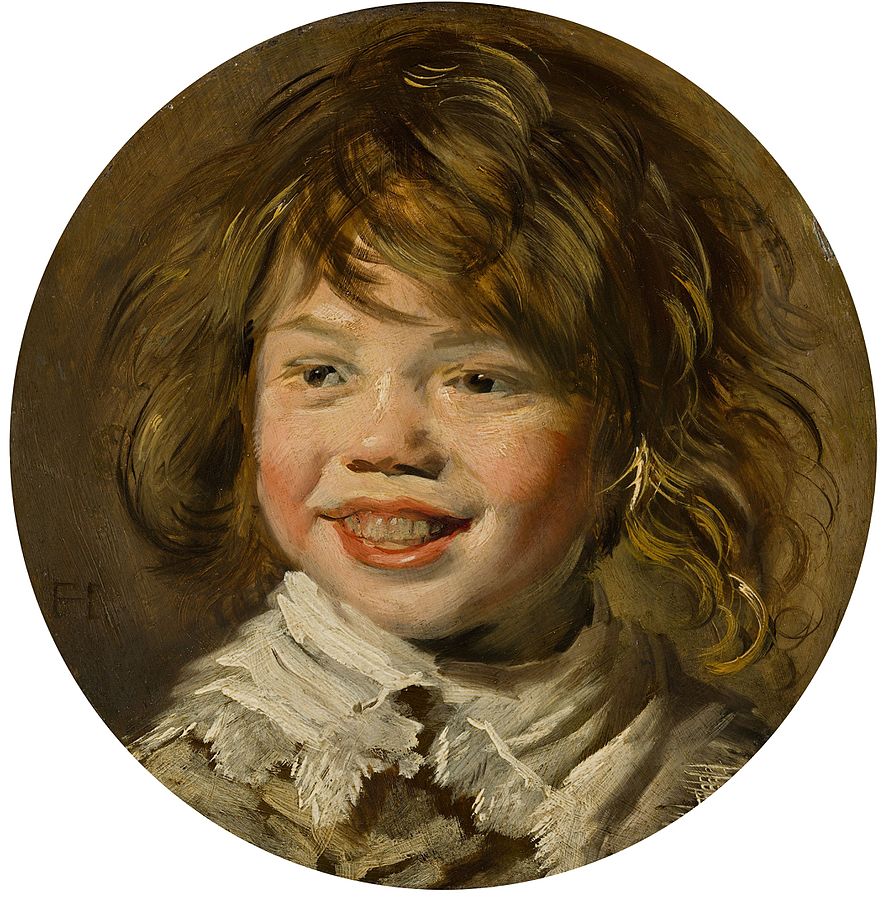
Even if you are not a child anymore (you probably are not, even if you think so) you can unleash your inner child every once in a while, and just grin for the fun of it. Clearly, teeth whitening was not a thing in the seventeenth-century Netherlands. Thanks to Hals’ technique the child seems to be vibrating with laughter, the visible bold brushstrokes imitating movement.
The Impressionists believed that Hals’ brushstrokes indicated the speed with which he was painting. In their eyes, it made him a spontaneous painter aiming at capturing the moment as quickly as possible. This was not exactly true; once Hals’ technique had been scientifically investigated it proved to be far from spontaneous. He planned his works carefully and applied the paint layer by layer with complete control of the outcome. The loose and bold brushwork is simply one of the tools Hals used to convey the emotion to us.
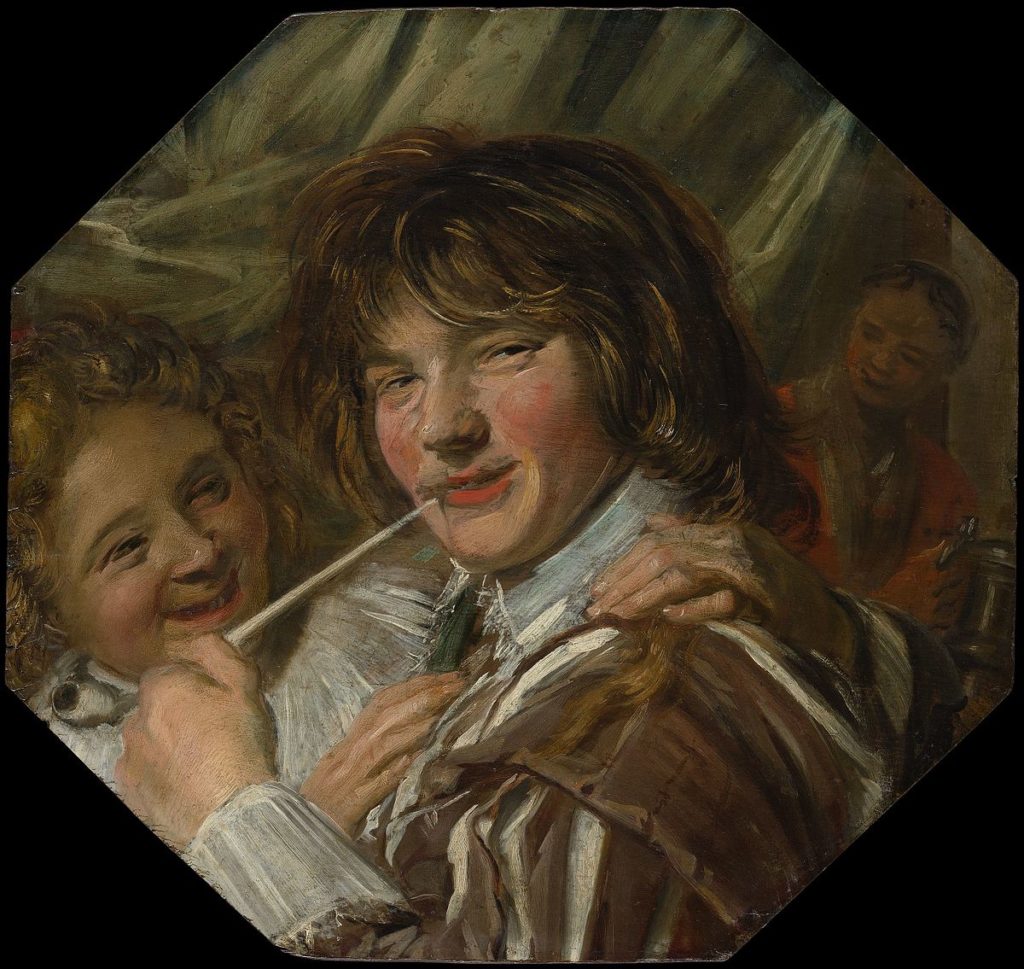
Just so we’re clear, I do not recommend smoking as a means to get you smiling. But you may achieve the same result with some chocolate or good cheese for example. Or any other guilty pleasure, as long as you enjoy it. Again we can admire Hals’ brushwork in full swing. The painting may be part of a series on the five senses, representing the smell. Such series were very popular in the seventeenth century, with examples by Jan Brueghel the Elder and Peter Paul Rubens and Rembrandt.
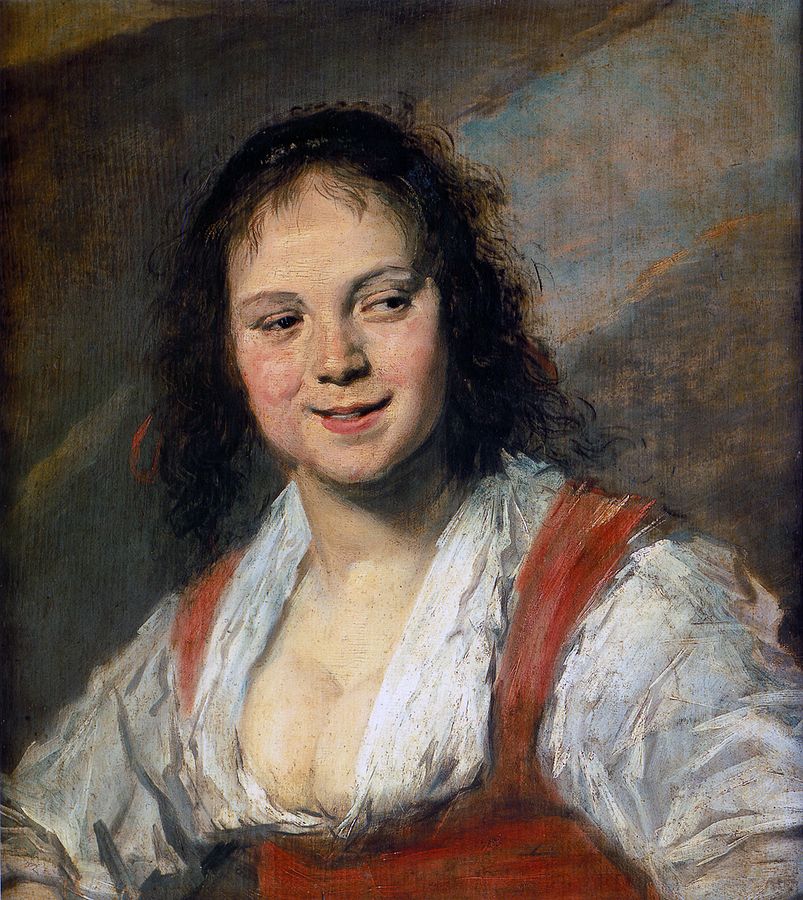
She clearly is looking for the next customer. Her expression is that of a hunter ready to get his prey. She is calm, certain and seductive at the same time. The imagery and reality of prostitution in the seventeenth-century Netherlands are two different things. In reality, all forms of illicit sex were criminal offences to be dealt with by criminal courts in the Protestant Netherlands. And yet the brothel scenes are a familiar type of seventeenth-century Dutch genre painting. Who bought these pictures? Where were they hanged? This contradiction is analysed more in-depth by Lotte C. van der Pol in her article if you are interested.
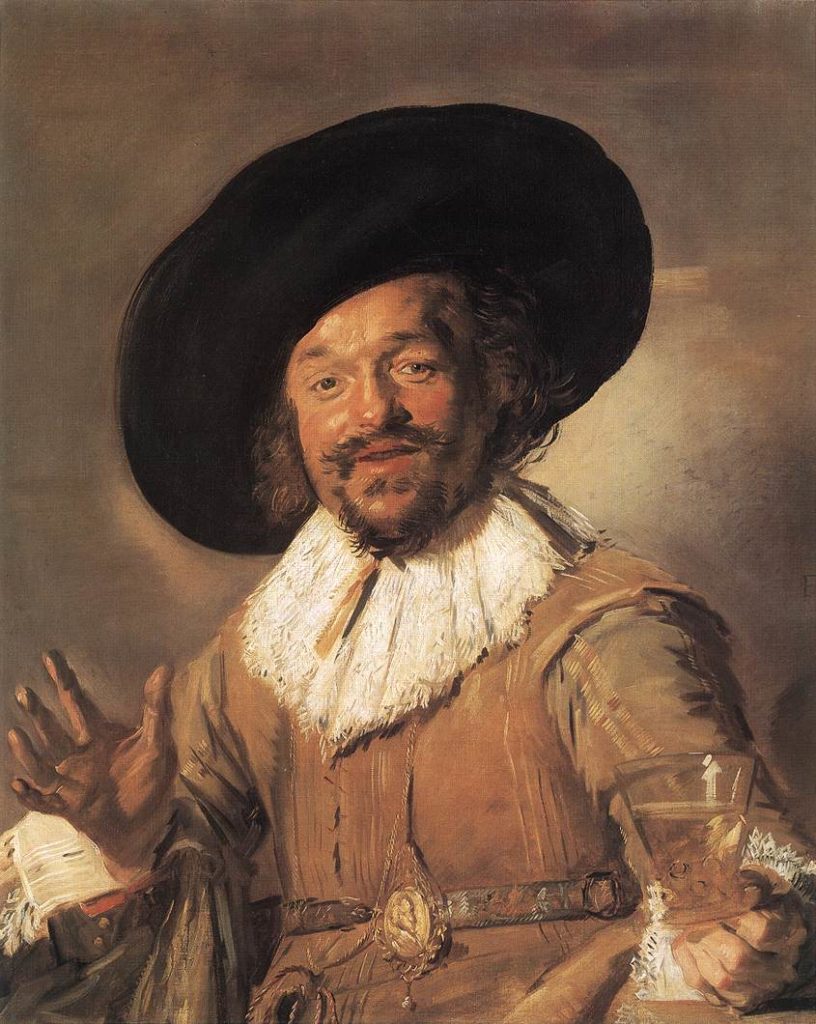
Here we have yet another one of our tronies: The merry drinker was a recurring topic in the Dutch Golden Age. The man seems to be captured in mid-sentence. He invitingly extends the glass in our direction, as if asking us to join him. Maybe even to take his side in a discussion or share a joke. His face is animated: He may not be outright laughing, but we can see the drink has made him mellow and content. Hals used here a very limited colour palette: Apart from the black hat and white collar, he limited himself to various shades of one colour. This, combined once again with the animated brushstrokes, creates a simple yet very vivid figure.
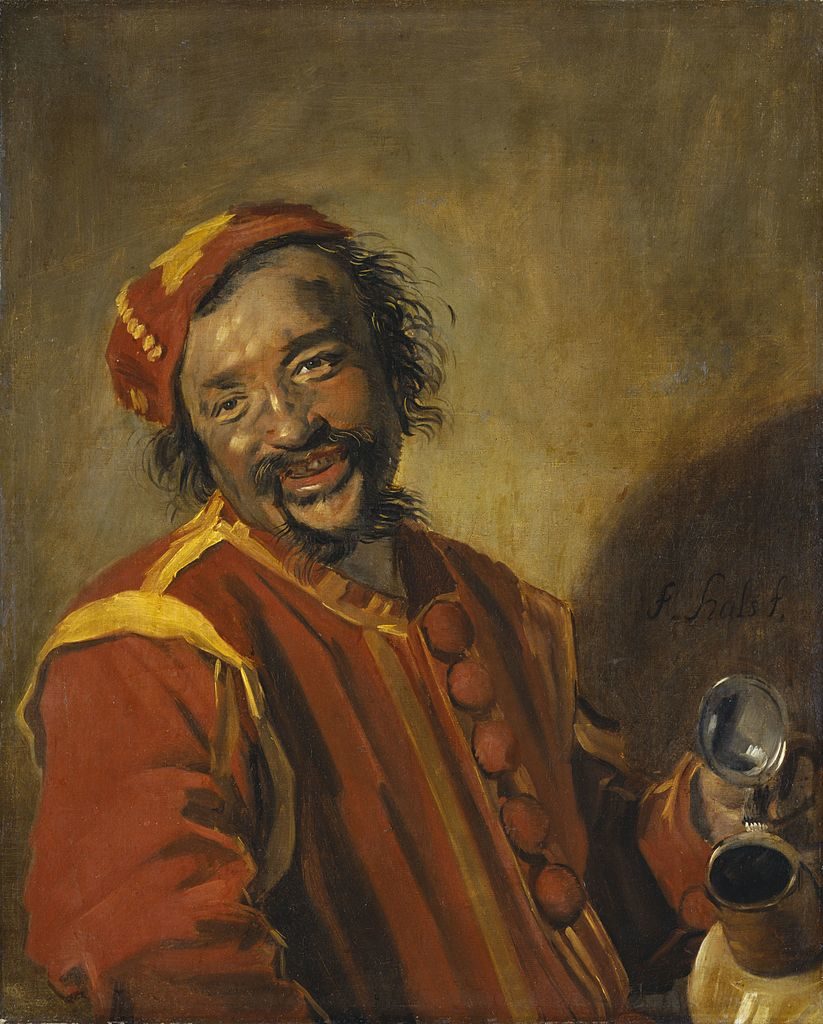
Meet Mr. Peeckelhaeringh (or Pekelharing), the comic figure who entertains guests at fairs and Shrove Tuesday feasts with his sharp and witty remarks. Peeckelhaeringh (‘salted herring’) is a serious drinker, whose throat is always dry. He is a jester, people like to laugh with and at him, but they don’t really respect him. Peeckelhaeringh is still in his work clothes, having a pint to unwind. Our friend may be smiling because his work is over for the day or maybe because he knows better than us how pitiful this world is. Or simply because this is not his first pint, decide for yourself.
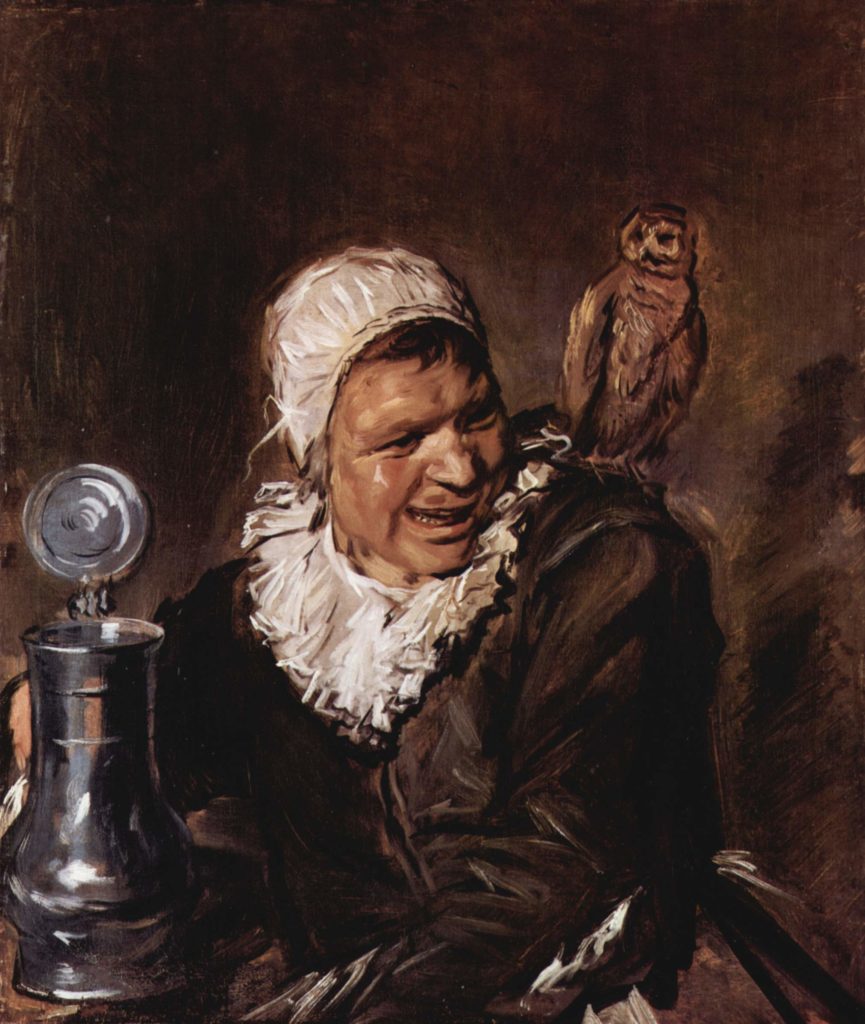
Sometimes when nothing else works, it may be time for some manic laughter. This painting was known for some time as The Witch of Haarlem, where the owl was believed to be one of the typical companions of a witch. However, we know now that a real Malle Babbe existed, her name was Barbara Claes. She was a resident of a local hospital called Het Dolhuys, which served people who were dangerous to themselves or to society, as well as a hospice for travellers arriving after the city gates had closed. In that case, the owl may be more related to the Dutch proverb ‘drunk as an owl’. There are two possible interpretations of her facial expression, either it is menacing manic laughter or her mind is gone and she laughs with childish abandon, not having a care in the world anymore.
One thing that Hals himself would probably not expect is to have a crater on Mercury named after him, but I’m pretty sure it would make him laugh.
The Frans Hals Museum in Haarlem devoted an entire exhibition to the Art of Laughter: Humour in the Golden Age; it is long over, but you can still buy the catalogue.
DailyArt Magazine needs your support. Every contribution, however big or small, is very valuable for our future. Thanks to it, we will be able to sustain and grow the Magazine. Thank you for your help!